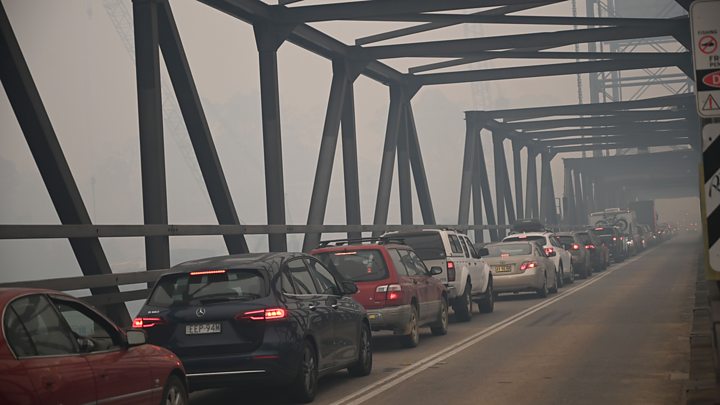
The premier of the Australian state of New South Wales has declared a week-long state of emergency in response to the escalating bushfire threat.
High temperatures and strong winds are forecast for the weekend, leading to "widespread extreme fire danger" in the eastern Australian state.
Since September, bushfires have killed 18 people and destroyed more than 1,200 homes across NSW and Victoria.
At least 17 people remain missing after fires this week alone.
Thousands of people are already fleeing a vast "tourist leave zone" in NSW, with supplies running low in some cut-off towns. It's been called "the largest relocation out of the region ever".
'What could be a horrible day'
The state of emergency will kick in at 08:00 on Friday morning (21:00 GMT on Thursday) and last for seven days, NSW Premier Gladys Berejiklian announced on Thursday.
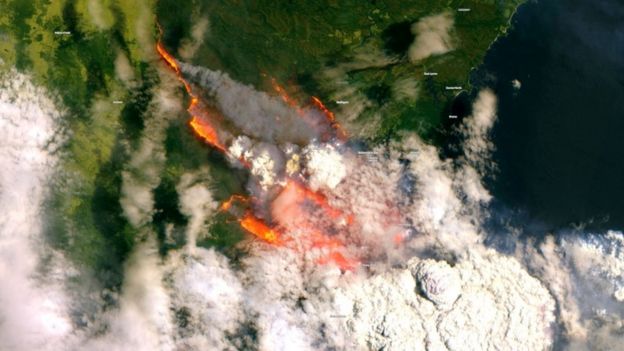 EU COPERNICUS SENTINEL DATA/REUTERS
EU COPERNICUS SENTINEL DATA/REUTERS
It will allow local authorities to carry out forced evacuations, road closures "and anything else we need to do as a state to keep our residents and to keep property safe", she said.
"We don't take these decisions lightly but we also want to make sure we're taking every single precaution to be prepared for what could be a horrible day on Saturday."
The state government has warned that conditions are likely to be "at least as bad" as New Year's Eve, when hundreds of homes were destroyed.
Earlier, fire officials told holidaymakers to urgently leave a 260km (160-mile) stretch of NSW coast before Saturday.
Long lines of cars have clogged highways leading back towards Sydney and Canberra.
Local media reported hour-long queues for petrol in the town of Batemans Bay, while fuel was being trucked in to the region as supplies dwindled.
- A visual guide to Australia's bushfire crisis
- Australia zookeepers save animals from bushfire
- The beach town where fires turned day to night

Many roads remained closed due to continuing fires and other dangers, such as unstable or fallen trees.
Workers were clearing roads, restoring power, and conducting "backburning" operations to thin out bushland near fire fronts.
NSW Transport Minister Andrew Constance urged people to drive slowly amid thick smoke. In an emotional interview with the ABC, he added that his own friends had lost homes.

This week's fires have destroyed at least 381 homes in NSW and 43 in Victoria, but officials say that number will grow.
The seven deaths in NSW include:
- Two people found in separate cars on Wednesday morning
- A father and son who stayed behind to defend their home and farm equipment
- A 28-year-old volunteer firefighter who was killed when wind flipped his fire engine
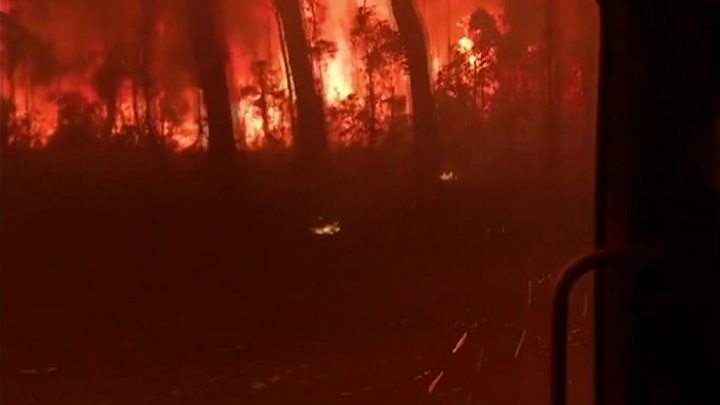
Family members of Mick Roberts, a 67-year-old Victorian missing since Monday, confirmed that he had been found dead in his home in Buchan, East Gippsland.
"Very sad day for us to (start) the year but we're a bloody tight family and we will never forget our mate and my beautiful Uncle Mick," his niece Leah Parson said on Facebook.
Victorian Premier Daniel Andrews said there were "significant fears" for 17 people unaccounted for in his state.
What is happening elsewhere?
Two regions of Western Australia (WA) face catastrophic fire danger on Thursday, and parts of South Australia are expected to see extreme conditions on Friday.

- Are you affected by the fires? Let us know by emailing haveyoursay@bbc.co.uk

The ABC reported that bushfires had forced the closure of a 330km stretch of a highway in WA, causing traffic jams.
Due to bushfire smoke, Canberra's air quality was rated worse than any major global city on Thursday, according to Swiss-based group AirVisual. Australia Post has suspended deliveries there "until further notice".
In Mallacoota, Victoria - where thousands fled to the beach on Tuesday - a navy boat was expected to begin evacuating people who have been cut off from roads.
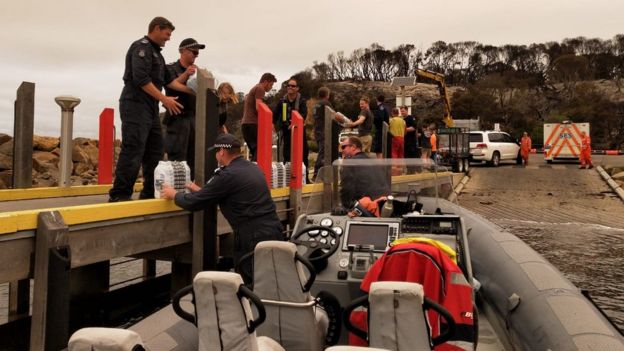 VICTORIA POLICE
VICTORIA POLICE
On Wednesday, police boats arrived with 1.6 tonnes of water, food, a paramedic and medical supplies.
Fire services in Victoria and NSW warned they had been unable to reach some people in remote areas.
On Thursday, Prime Minister Scott Morrison repeated his calls to people not to panic and to trust emergency workers.
"I understand the fear that is there for many and the frustration, but this is a natural disaster, and natural disasters are best dealt with through the methodical, well-coordinated response that we are seeing today," he told a press conference.
Amid criticism that he has "gone missing" during the crisis, Mr Morrison added that Cabinet would meet on Monday to consider a long-term bushfire response.
Meteorologists say a climate system in the Indian Ocean, known as the dipole, is the main driver behind the extreme heat in Australia.
However many parts of Australia have been in drought conditions, some for years, which has made it easier for the fires to spread and grow.
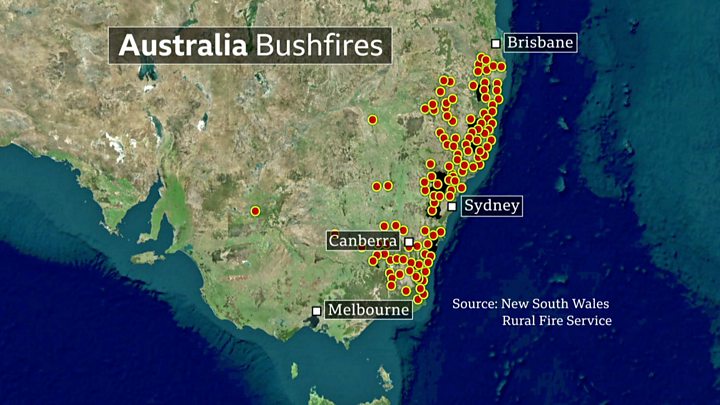
The smoke from Wednesday's fires was visible from the South Island of New Zealand, more than 2,000km (1,200 miles) away, where the haze tinted the sky orange.
Have you been told to evacuate? You can get in touch by emailing haveyoursay@bbc.co.uk if it is safe for you to do so.
Please include a contact number if you are willing to speak to a BBC journalist. You can also contact us in the following ways:
- WhatsApp: +44 7756 165803
- Tweet: @BBC_HaveYourSay
- Send pictures/video to yourpics@bbc.co.uk
- Upload your pictures / video here
- Text an SMS or MMS to 61124 or +44 7624 800 100
- Please read our terms & conditions and privacy policy
Or use the form below

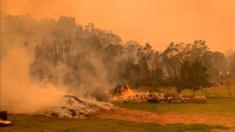
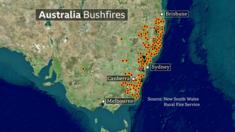
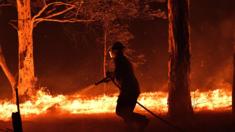


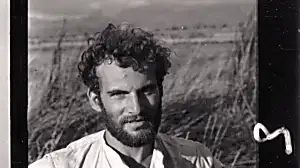

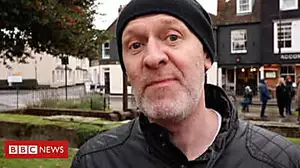


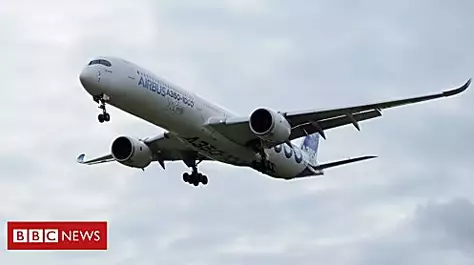



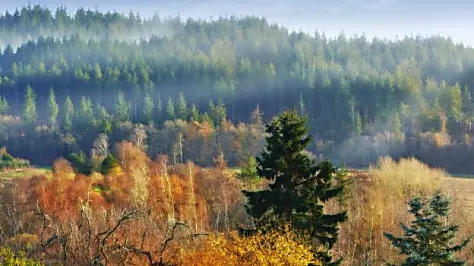






No comments:
Post a Comment